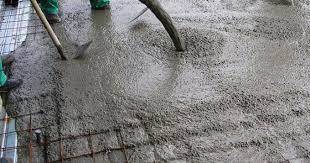Cement Basics
What is cement
Cement is a binding material used in construction to bind other materials, such as aggregates (sand and gravel), together. It is a powdery substance that, when mixed with water, forms a paste that hardens and sets, ultimately creating a strong and durable material known as concrete.
Cement is typically made from a combination of limestone, clay, shale, and other materials. These raw materials are mined, crushed, and then heated in a kiln at high temperatures, reaching around 1450 degrees Celsius (2642 degrees Fahrenheit). This process, known as calcination, causes chemical reactions that convert the raw materials into a product called clinker.
The clinker is then ground into a fine powder, which is the cement we commonly use. To make concrete, cement is mixed with water and combined with aggregates (such as sand and gravel) to form a mixture that can be poured, molded, or shaped before it hardens and solidifies.
Cement plays a crucial role in construction projects, providing strength and stability to structures like buildings, bridges, roads, and dams. It is widely used in the construction industry due to its ability to adhere to other materials and form a solid mass, making it an essential component in modern infrastructure.
Cement benefits
Cement is a widely used construction material with several benefits. Here are some key advantages of cement:
Strength and Durability: Cement is known for its excellent strength and durability. It provides a solid foundation for structures and can withstand heavy loads and harsh environmental conditions, making it suitable for long-lasting construction projects.
Versatility: Cement is a versatile material that can be used for various applications. It is commonly used in the construction of buildings, bridges, dams, roads, and other infrastructure projects. It can also be molded into different shapes and sizes, allowing for flexibility in design.
Fire Resistance: Cement has inherent fire-resistant properties. It does not burn or release any toxic fumes when exposed to high temperatures, making it a safe choice for fire-prone areas or structures that require fire protection.
Thermal Insulation: Cement has good thermal insulation properties, which means it helps in maintaining a comfortable indoor environment by reducing heat transfer. This quality is beneficial for energy-efficient buildings, as it can contribute to lower heating and cooling costs.
Cost-Effective: Cement is relatively inexpensive compared to other construction materials, such as steel or timber. It is readily available in most regions, making it a cost-effective choice for large-scale construction projects.
Sustainability: Cement production has made significant progress in terms of sustainability. Many manufacturers are adopting environmentally friendly practices, such as using alternative fuels, reducing carbon emissions, and incorporating recycled materials in cement production.
Resistance to Moisture and Chemicals: Cement is resistant to moisture and chemical degradation, which makes it suitable for applications in wet or corrosive environments. It can withstand exposure to water, humidity, and various chemicals, ensuring the longevity of structures.
Easy Maintenance: Structures built with cement generally require minimal maintenance. Regular inspections and minor repairs can help extend the lifespan of cement-based constructions, reducing the need for extensive maintenance work.
Aesthetics: Cement offers a wide range of aesthetic possibilities. It can be colored, textured, or finished in different ways to achieve desired appearances. It provides architects and designers with the freedom to create visually appealing structures.
It's worth noting that while cement offers numerous benefits, its production and use can have environmental impacts. Efforts are being made to develop more sustainable and eco-friendly alternatives to traditional cement, such as low-carbon cements and alternative binders



No comments yet
Be the first to share your thoughts!